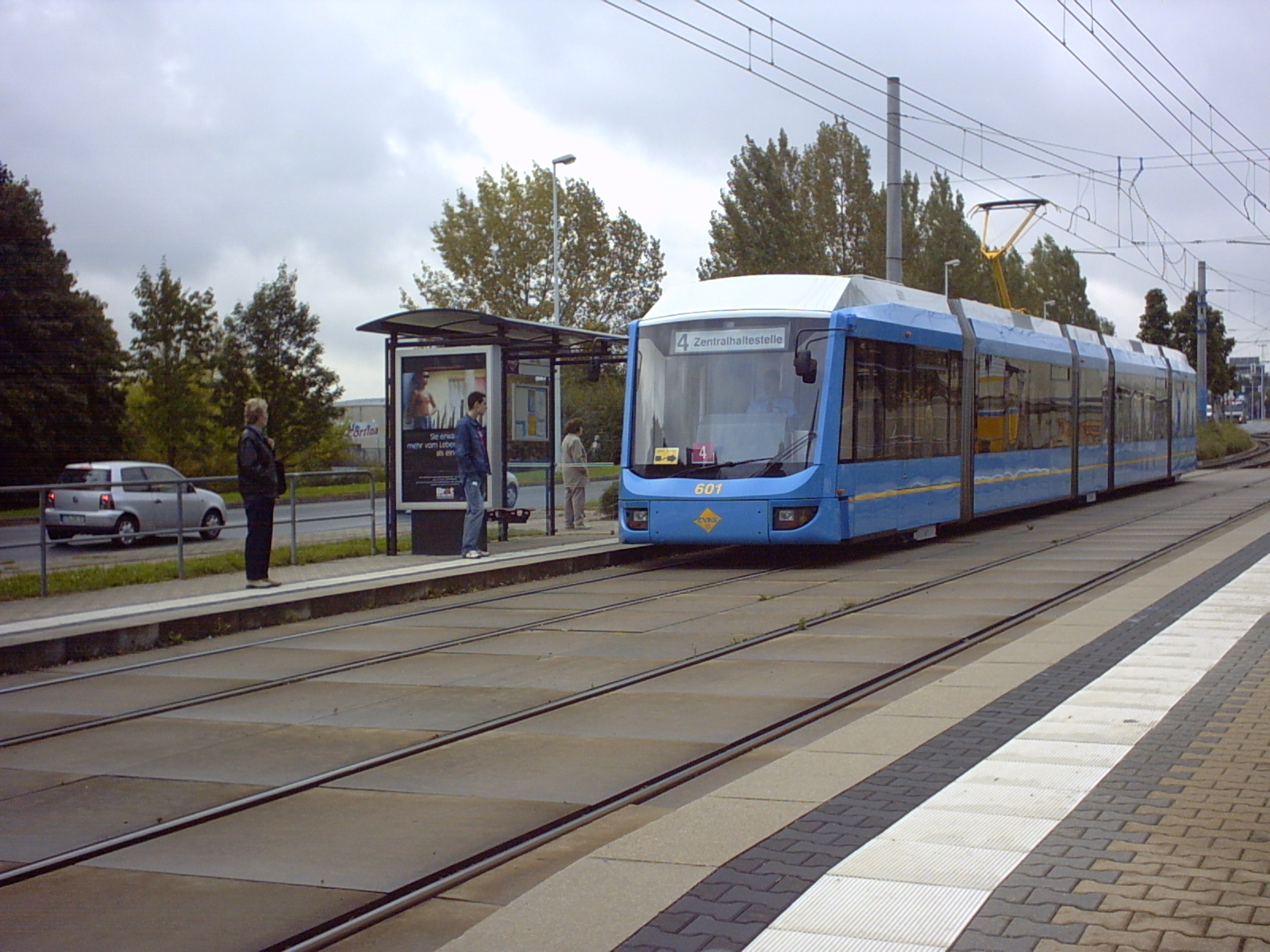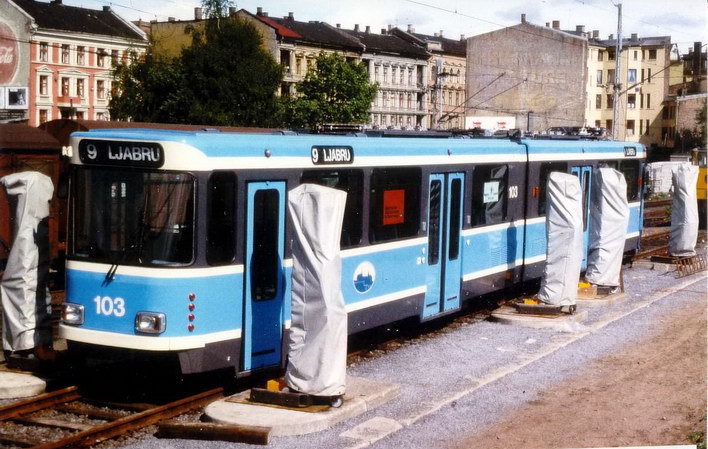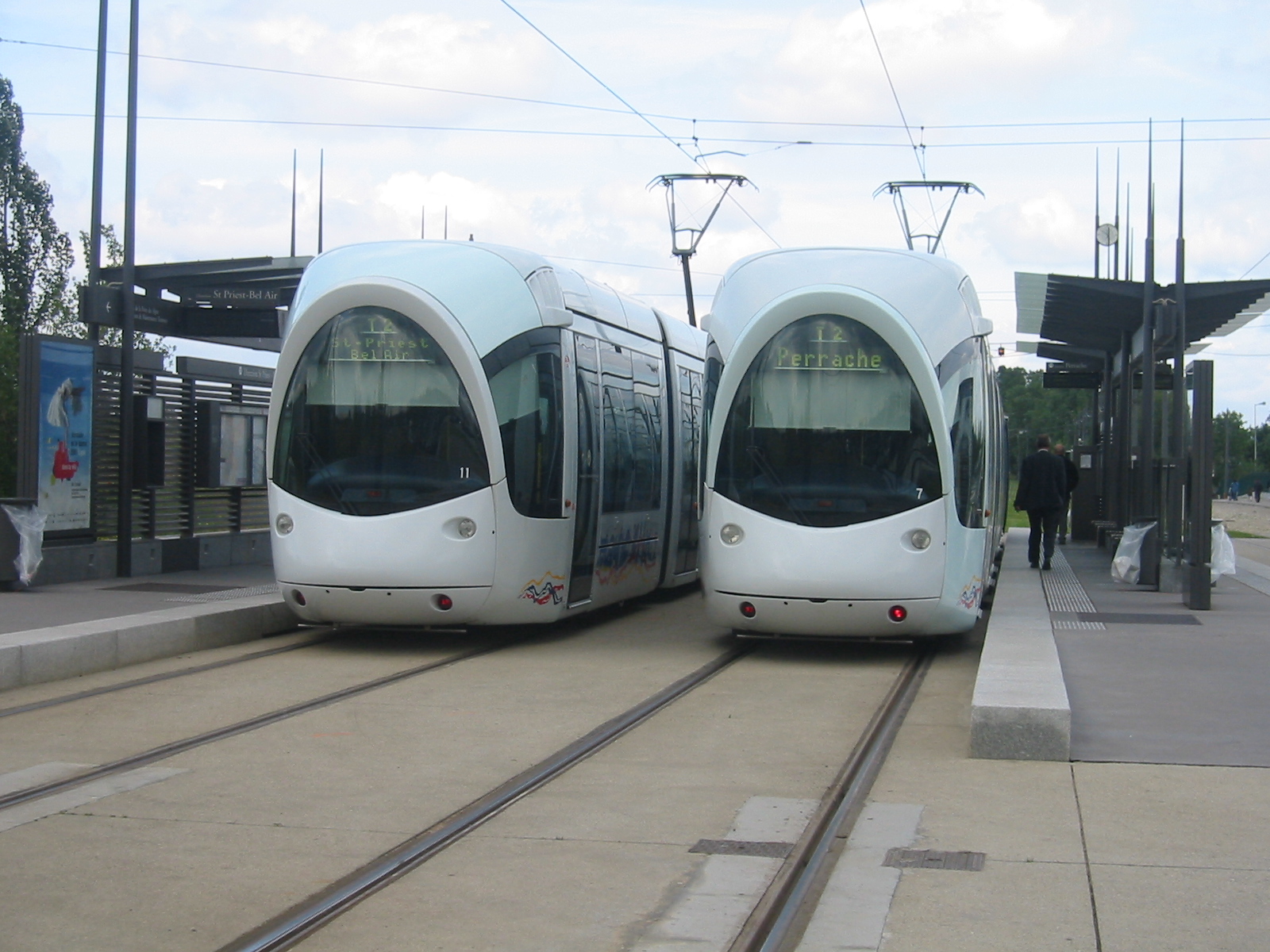|
Schous Plass
Schous plass (Schou Square) is a square in the southern part of the borough of Grünerløkka in Oslo, Norway. History The area belonged to Aker municipality until 1858, when it was incorporated into Christiania (Oslo). It was laid out in 1873, and got its name in 1874. Its namesake was brewery owner Christian Schou, who died in the same year. Not far away, at the property Schousløkken in the street ''Trondheimsveien'', he had established production facilities of his company, the Schou Brewery, between 1872 and 1874. A park was established at the square between 1915 and 1916, and renovated in 1986. The square is surrounded by four streets and buildings. The local library, administratively a satellite of the Deichman Library, was raised here between 1912 and 1914. A building for the Norwegian School of Marketing ( no, Norges Markedshøyskole) was erected between 1989 and 1990. This institution was incorporated into the Norwegian School of Management in 1992, an institution which h ... [...More Info...] [...Related Items...] OR: [Wikipedia] [Google] [Baidu] |
Grünerløkka Map 1900
Grünerløkka is a borough of the city of Oslo, Norway. Grünerløkka became part of the city of Oslo (then Christiania) in 1858. Grünerløkka was traditionally a working class district; however, since the late 20th century the area has increasingly undergone gentrification. Although it is located in the East End, it is more expensive than other parts of the East End. Etymology The first element was derived from the surname ''Grüner''. The last element is the definite form of ''løkke'', meaning " paddock". Grünerløkka was named after Friedrich Grüner (1628-1674) who served as chief administrator (''Oberhauptmann'') and the master of the mint (''myntmester'') at Christiania from 1651 until his death in 1674. Grüner purchased the Kings Mill (''Kongens mølle'') and surrounding acreage in the area from King Christian V of Denmark in 1672. History Thorvald Meyer (1818–1909) bought parts of the Grünerløkka area in 1861. The industrialist built the main street of Grü ... [...More Info...] [...Related Items...] OR: [Wikipedia] [Google] [Baidu] |
Nydalen
Nydalen is a neighbourhood in the Nordre Aker borough in northern Oslo, Norway. History In the late 19th century, the banks of the Akerselva River were dotted with various industrial buildings, Nydalen included. However, a transformation soon occurred. Beginning in the 1990s, Nydalen evolved into an urban hub of sorts with modern residential buildings, commercial and service establishments, shopping centres, eateries, and numerous corporate offices. The relocation of the BI Norwegian Business School to the area in 2004 further boosted the area's development. In 2003, a new subway station, Nydalen (station) opened in Nydalen. Many people have moved into new residential buildings in the late 2000s. Today, the area is a lively, trendy and well-connected neighbourhood with the Akerselva River flowing through its heart. Geography The neighbourhood is located on both sides of the Akerselva river in the southeastern part of Nordre Aker, to the south of Kjelsås, to the west of Gr ... [...More Info...] [...Related Items...] OR: [Wikipedia] [Google] [Baidu] |
SL95
SL95 is a series of 32 low-floor, articulated trams operated on the Oslo Tramway. The series was built by Italian rail manufacturer Ansaldo/Firema, later known as AnsaldoBreda (now Hitachi Rail Italy), and delivered between 1999 and 2004. Capacity for the eight-axle, three-section vehicles is 212 passengers, of which 88 can be seated. The name derives from being ordered in 1995. Original plans called for the delivery to be between 1997 and 1998. Delivery took many years due to a magnitude of technical flaws, including high noise levels, freezing during the winter and corrosion. The trams are long, wide and tall. The aluminum vehicles weigh and have a power output of . The trams operate all services on lines 13, 17 and 18. Due to their heavy weight and large turning radius they are unsuitable for the other lines. However, they are the only bi-directional trams in the fleet, and are needed on lines 17 and 18 along the Ullevål Hageby Line. The trams cost about each, but discou ... [...More Info...] [...Related Items...] OR: [Wikipedia] [Google] [Baidu] |
SL79
SL79 is a class of 40 articulated trams operated by the Oslo Tramway of Norway. The trams were a variation of the Duewag trams that had been developed by the German manufacturer since the 1950s. The six-axle vehicles are unidirectional with four doors on the right side. The trams can seat 77 passengers three and four abreast, with an additional 91 people able to stand. Power output is , provided by two motors on the two end bogies, that supplement a central unpowered Jacobs bogie located under the articulation. The trams are long and wide. They are capable of and have standard gauge. They were built in two series, the first of 25 units delivered in 1982–84, and the second of 15 units delivered in 1989–90. The first 10 units were built by Duewag, while the last 30 were built in Norway by Strømmen. They were numbered 101 through 140. The two series vary slightly in specifications. The trams were ordered in 1979 after the 1977 decision to not close the tramway, after the SM53 ... [...More Info...] [...Related Items...] OR: [Wikipedia] [Google] [Baidu] |
Oslo Sporveier
AS Oslo Sporveier is a defunct municipal owned company responsible for public transport in Oslo, Norway. It was created in 1924 to take over the city's two private tram companies. In 1927 its started with bus transport, including from 1940 to 1968 trolleybuses. Since 1966 rapid transit and from 1985 water buses have also been operated by the company. It was split into two separate companies in 2006; Kollektivtransportproduksjon took over the operation while Oslo Public Transport Administration (who retained the Oslo Sporveier brand) was responsible for buying the services, fare regulation and marketing. The latter merged into Ruter in 2008, when the Oslo Sporveier brand was discontinued. History It all started with trams In 1875, Kristiania Sporveisselskab (KSS) started the first horsecar services in Oslo—at the time called Kristiania. It was followed by Kristiania Elektriske Sporvei (KES) who established electric tram services in 1894; by 1900 KSS had also converted its route ... [...More Info...] [...Related Items...] OR: [Wikipedia] [Google] [Baidu] |
Oslo Tramway
The Oslo tram network ( no, Trikken i Oslo, short from ', 'electric') is the tram system in Oslo, Norway. It consists of six lines with 99 stops and has a daily ridership of 132,000. It is operated by , a subsidiary of the municipally-owned who maintain the track and 72 tram vehicles on contracts with the public transport authority . The system operates on standard gauge and uses 750 V DC overhead. Depot, workshops and headquarters are at (at the terminus of lines 13 and 17). There is also a depot at (along lines 18 and 19) that is home to the technical company InfraPartner, which maintains the track for the tram and metro systems in Oslo, and a small office building for . History The first tram in Oslo was opened in 1875 with a short line between Homansbyen west of the city centre, Oslo West Railway Station and a sideline to Grønland, east of the city centre. The first "trams" were in fact horse-drawn vehicles on flanged steel wheels. The first expansion of the line came ... [...More Info...] [...Related Items...] OR: [Wikipedia] [Google] [Baidu] |
Grünerløkka–Torshov Line
The Grünerløkka–Torshov ( no, Grünerløkka–Torshov-linjen) is a tramway line running between Jernbanetorget to Storo in Oslo, Norway. It is served by lines 11, 12 and 18 of the Oslo Tramway. The line serves the city-centre of Oslo, Grunerlokka and Sagene. The line was built by Kristiania Sporveisselskap and opened for horsecars in 1878 from Stortorvet to Grünerløkka, and was extended on 12 April 1879 to St. Halvards Plass. Electrification occurred in 1899, with a further extension to Grefsen Station in 1902. In 1934, the Kjelsås Line was built branching off from Storo, going through Disen and the suburbs of Kjelsås, before terminating at Kjelsås tram stop Kjelsås, sometimes called Kjelsaas, is one of the northern neighbourhoods of Oslo situated in Nordre Aker, the northern borough of Oslo, Norway. History Together with Grefsen, Kjelsås was part of the borough ''Grefsen-Kjelsås'' until Janu .... Between 1988 and 1998, the trams to Sagene ran via ... [...More Info...] [...Related Items...] OR: [Wikipedia] [Google] [Baidu] |
Tram Stop
A tram stop, tram station, streetcar stop, or light rail station is a place designated for a tram, streetcar, or light rail vehicle to stop so passengers can board or alight it. Generally, tram stops share most characteristics of bus stops, but because trams operate on rails, they often include railway platforms, especially if stepless entries are provided for accessibility. However, trams may also be used with bus stop type flags and with mid-street pavements as platforms, in street running mode. Examples Most tram or streetcar stops in Melbourne and Toronto and other systems with extensive sections of street-running have no associated platforms, with stops in the middle of the roadway pavement. In most jurisdictions, traffic cannot legally pass a tram or streetcar whose doors are open, unless the tram is behind a safety zone or has a designated platform. On the other hand, several light rail systems have high-platform stops or stations with dedicated platforms at railway ... [...More Info...] [...Related Items...] OR: [Wikipedia] [Google] [Baidu] |
Edvard Munch
Edvard Munch ( , ; 12 December 1863 – 23 January 1944) was a Norwegian painter. His best known work, ''The Scream'' (1893), has become one of Western art's most iconic images. His childhood was overshadowed by illness, bereavement and the dread of inheriting a mental condition that ran in the family. Studying at the Royal School of Art and Design in Kristiania (today's Oslo), Munch began to live a bohemian life under the influence of the nihilist Hans Jæger, who urged him to paint his own emotional and psychological state (' soul painting'). From this emerged his distinctive style. Travel brought new influences and outlets. In Paris, he learned much from Paul Gauguin, Vincent van Gogh and Henri de Toulouse-Lautrec, especially their use of color. In Berlin, he met the Swedish dramatist August Strindberg, whom he painted, as he embarked on a major series of paintings he would later call ''The Frieze of Life'', depicting a series of deeply-felt themes such as love, anxiety, je ... [...More Info...] [...Related Items...] OR: [Wikipedia] [Google] [Baidu] |
Store Norske Leksikon
The ''Great Norwegian Encyclopedia'' ( no, Store Norske Leksikon, abbreviated ''SNL''), is a Norwegian-language online encyclopedia. The online encyclopedia is among the most-read Norwegian published sites, with more than two million unique visitors per month. Paper editions 1978–2007 The ''SNL'' was created in 1978, when the two publishing houses Aschehoug and Gyldendal merged their encyclopedias and created the company Kunnskapsforlaget. Up until 1978 the two publishing houses of Aschehoug and Gyldendal, Norway's two largest, had published ' and ', respectively. The respective first editions were published in 1907–1913 (Aschehoug) and 1933–1934 (Gyldendal). The slump in sales for paper-based encyclopedias around the turn of the 21st century hit Kunnskapsforlaget hard, but a fourth edition of the paper encyclopedia was secured by a grant of ten million Norwegian kroner from the foundation Fritt Ord in 2003. The fourth edition consisted of 16 volumes, a t ... [...More Info...] [...Related Items...] OR: [Wikipedia] [Google] [Baidu] |
Sandvika
Sandvika () is the administrative centre of the municipality of Bærum in Norway. It was declared a List of cities in Norway, city by the municipal council (Norway), municipal council in Bærum on 4 June 2003. Sandvika is situated approximately west of Oslo. It is the main transportation hub for Western Bærum, and has a combined bus and Sandvika Station, railway station. Sandvika is also one of the stops along the route of the Flytoget, Airport Express Train. Sandvika also has Scandinavia's largest super mall, Sandvika Storsenter, with 190 stores and a total area of . On 13 March 2013, the previously pedestrianized main street was opened for car traffic and on-street parking. Sandvika used to be home to the BI Norwegian Business School, which moved to new surroundings in Nydalen, Oslo in August 2005. The building was, after some refurbishing, converted into the home of Sandvika High School. Another school in Sandvika is Norges Realfagsgymnas NRG (Norwegian school of maths and s ... [...More Info...] [...Related Items...] OR: [Wikipedia] [Google] [Baidu] |
Grünerløkka
Grünerløkka is a borough of the city of Oslo, Norway. Grünerløkka became part of the city of Oslo (then Christiania) in 1858. Grünerløkka was traditionally a working class district; however, since the late 20th century the area has increasingly undergone gentrification. Although it is located in the East End, it is more expensive than other parts of the East End. Etymology The first element was derived from the surname ''Grüner''. The last element is the definite form of ''løkke'', meaning "paddock". Grünerløkka was named after Friedrich Grüner (1628-1674) who served as chief administrator (''Oberhauptmann'') and the master of the mint (''myntmester'') at Christiania from 1651 until his death in 1674. Grüner purchased the Kings Mill (''Kongens mølle'') and surrounding acreage in the area from King Christian V of Denmark in 1672. History Thorvald Meyer (1818–1909) bought parts of the Grünerløkka area in 1861. The industrialist built the main street of Grüne ... [...More Info...] [...Related Items...] OR: [Wikipedia] [Google] [Baidu] |







.jpg)